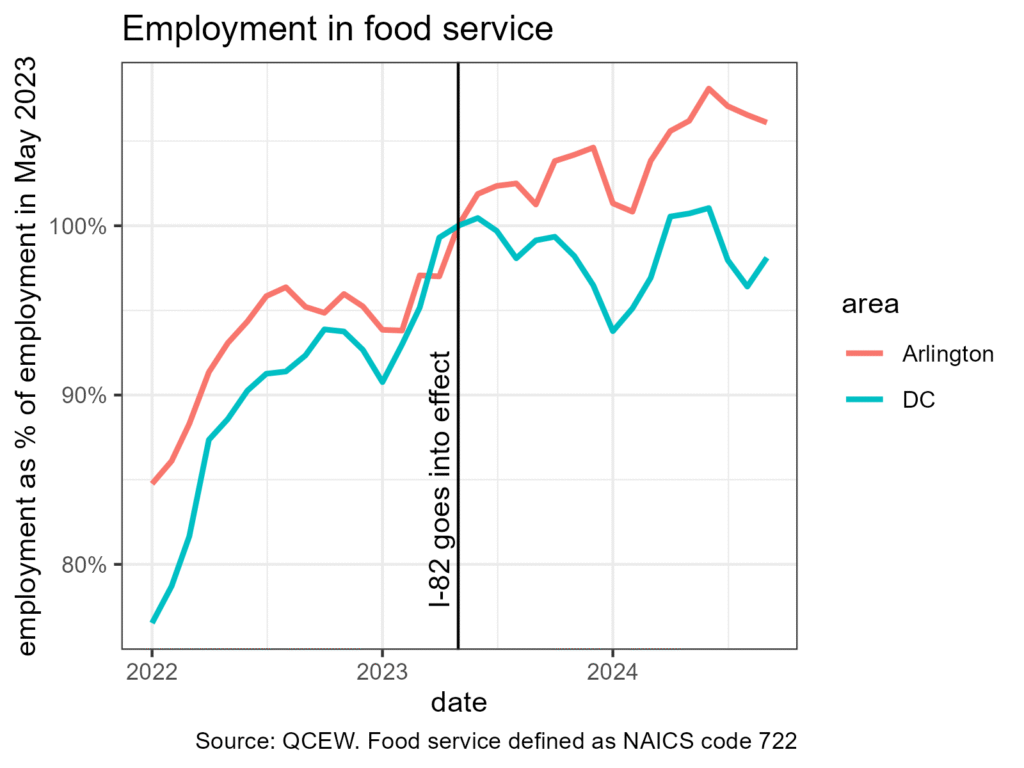Hello and welcome to my first post.
In 2022, voters in Washington, DC, passed Initiative 82, which raised the tipped minimum wage to be on par with the standard minimum wage. Prior to this (and the way it is in most other states), tipped workers were subject to much lower minimum wage, with tips expected to make up the difference. Employers are required to cover the difference if tips don’t. I-82 increases the tipped minimum wage incrementally, with the first increase (of $0.65) occurring in May 2023, and subsequent increases of $2 occurring each July thereafter.
DC’s mayor, Muriel Bowser, has recently called for I-82 to be repealed amid persistent criticism from the restaurant industry. If this all sounds familiar, it’s because DC went through a similar saga after passing Initiative 77 by referendum back in 2018. I-77 would have repealed the tipped minimum wage, but it was overturned by the DC Council before it could go into effect.
By nature I am skeptical of restaurant owners and associated bigwigs, and I wrote back in 2018 that repealing I-77 was an insult to DC’s low income and Black voters, who supported it strongly. Thus, I wanted to dig in a little bit to the claim that I-82 was “suffocat[ing] an industry gasping for air” as one conservative think tank put it.
To try to isolate the impact of I-82, I compared employment in the restaurant industry in DC to that in Arlington, VA, just across the Potomac, before and after I-82 went into effect. Arlington was not impacted directly by I-82, and thus it serves as a control group. Economists call this a “difference-in-difference” model, albeit a very rudimentary one.
I gathered employment data from the Bureau of Labor Statistics’ Quarterly Census of Employment and Wages, and looked at the number of employees employed in “Food services and drinking places,” also known in the data as NAICS code 722. I looked at employment by month from January 2022 through September 2024. For both DC and Arlington, I created a new variable defined as employment in the restaurant industry as a percentage of employment in that industry at the time I-82 went into effect, May 2023.

Before I-82, both DC and Arlington saw rapid growth in restaurant employment, which makes sense given the end of the Covid pandemic. After I-82, it appears that Arlington experienced stronger growth in the industry than DC . That being said, the data does not reflect any sort of collapse in employment in DC. Employment in the industry is volatile to begin with, and I’m not sure repealing I-82 is the answer to DC’s economic woes. After all, the problems associated with the tipped minimum wage, such as wage theft, would still be there.
A deeper investigation would repeat this exercise with other nearby cities and counties and also compare restaurant industry employment to employment in other industries unaffected by I-82. That would be a difference-in-difference-in-difference model. Maybe next time…
Thanks for reading!